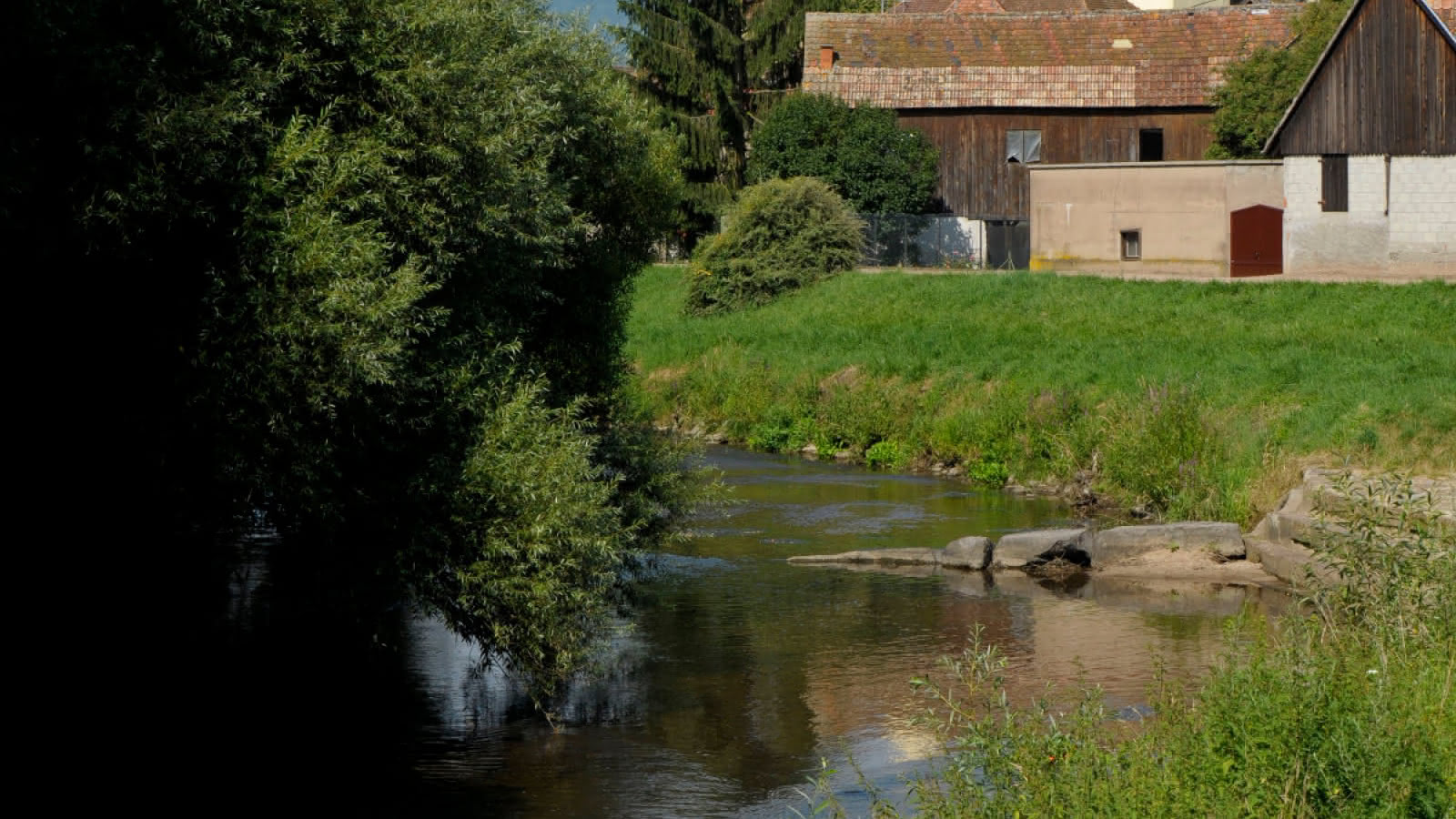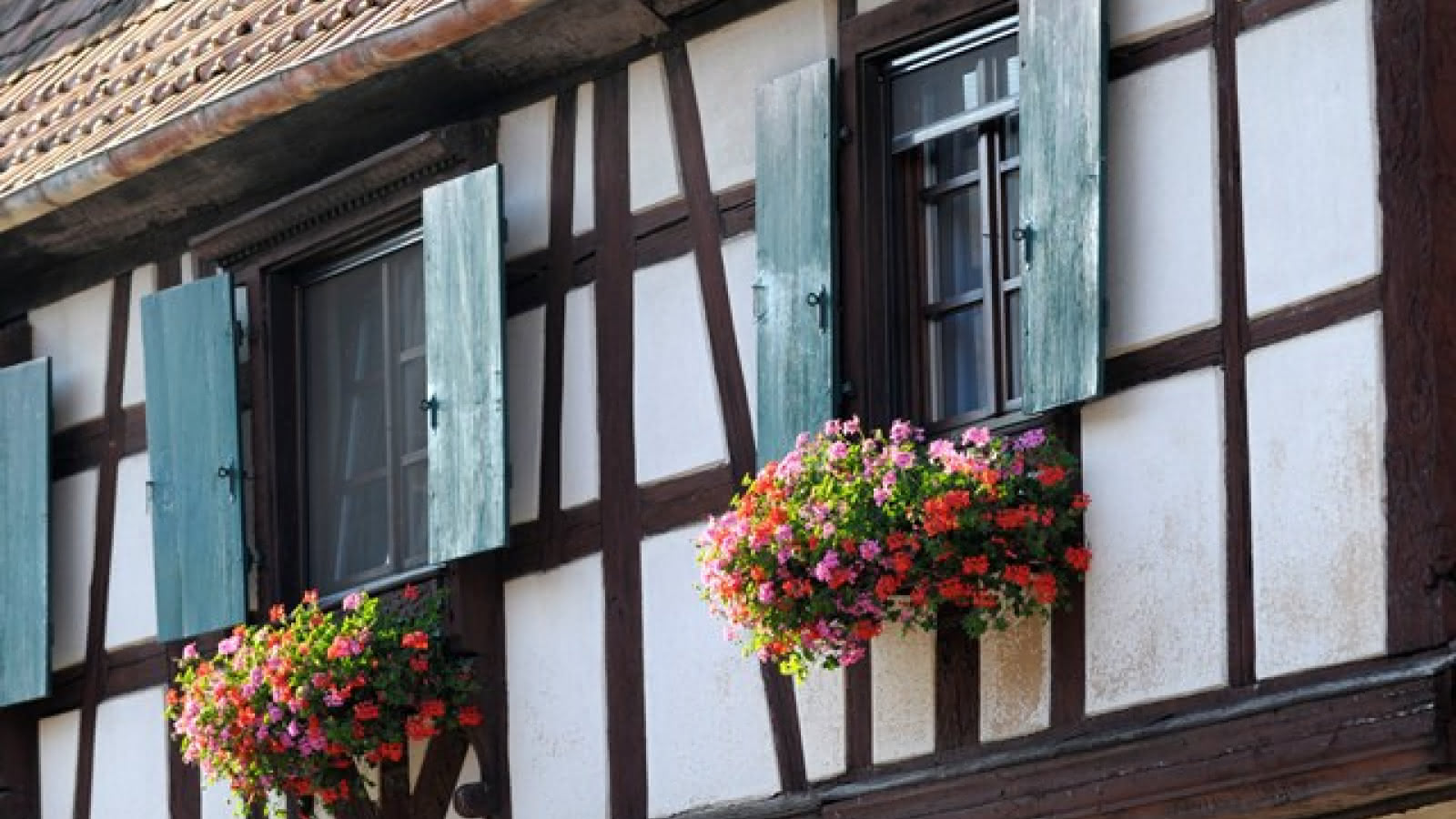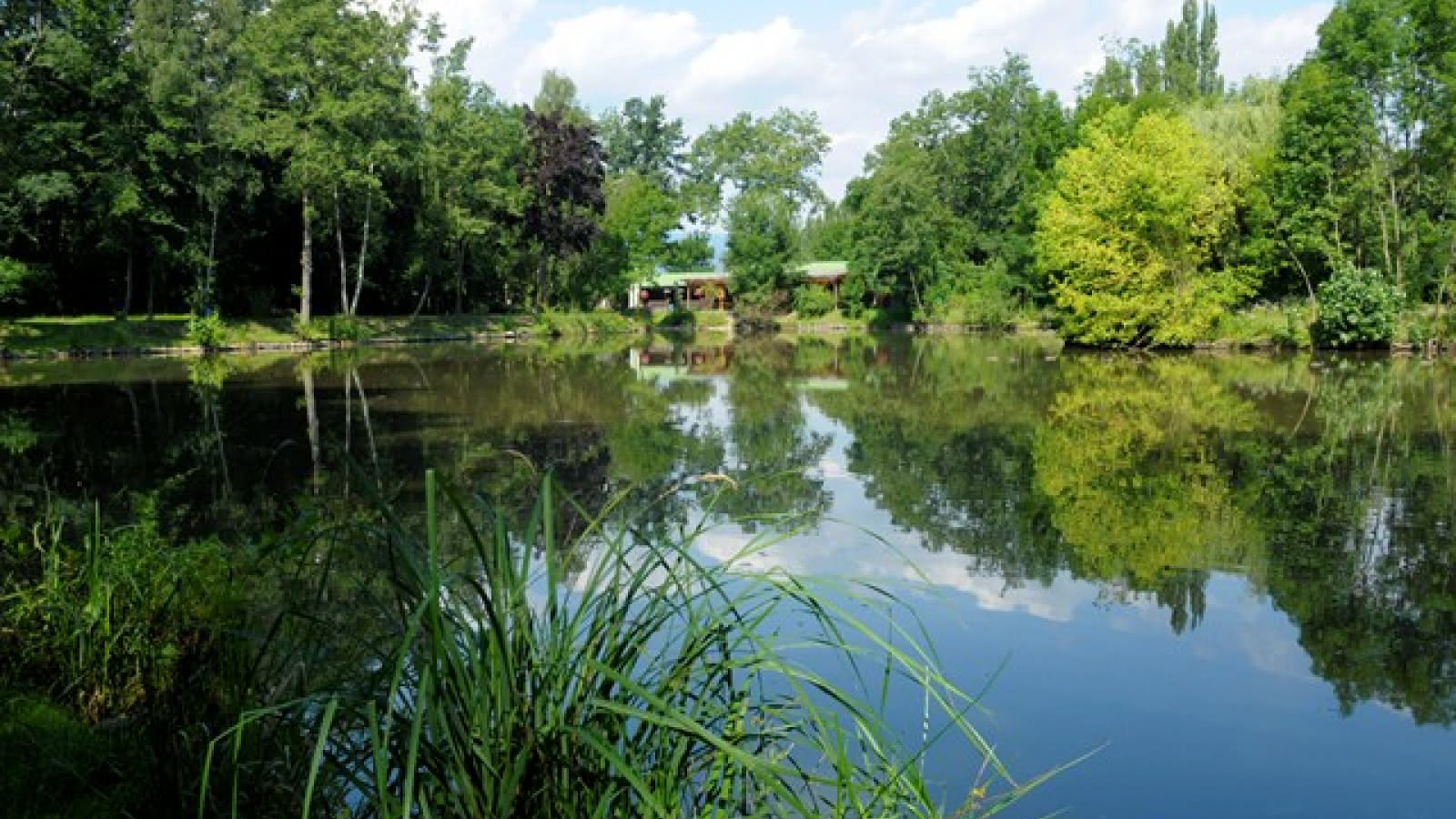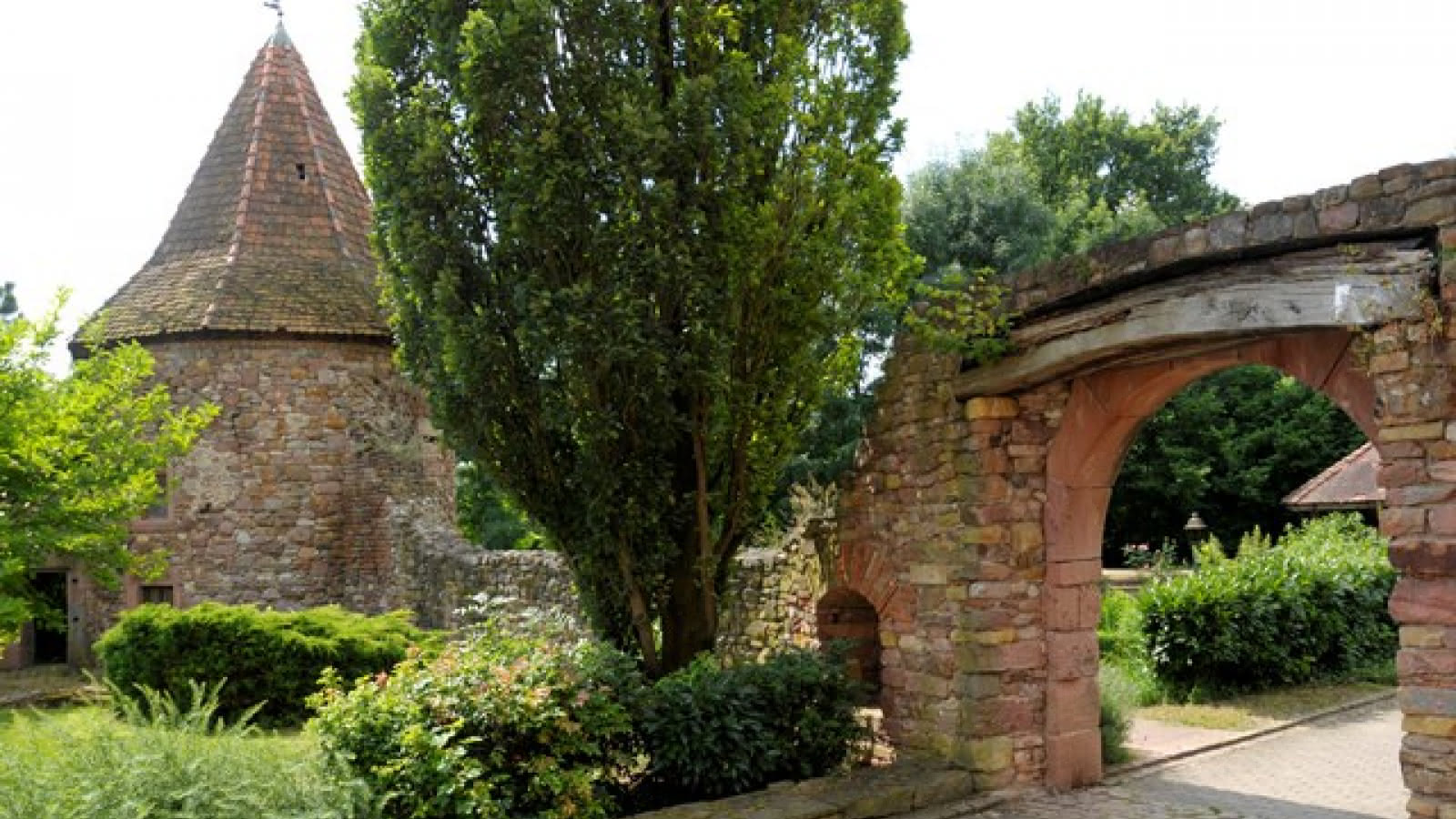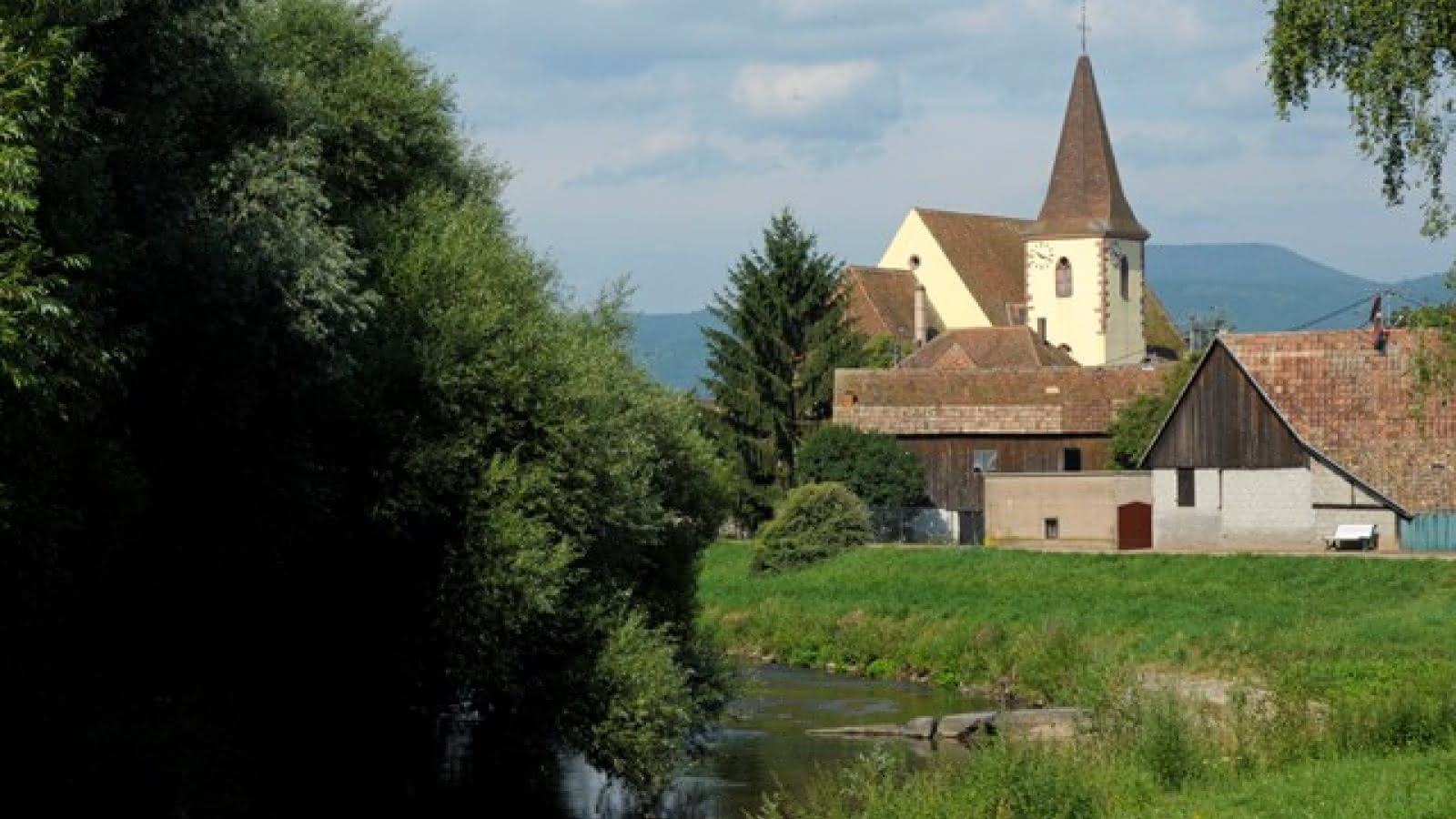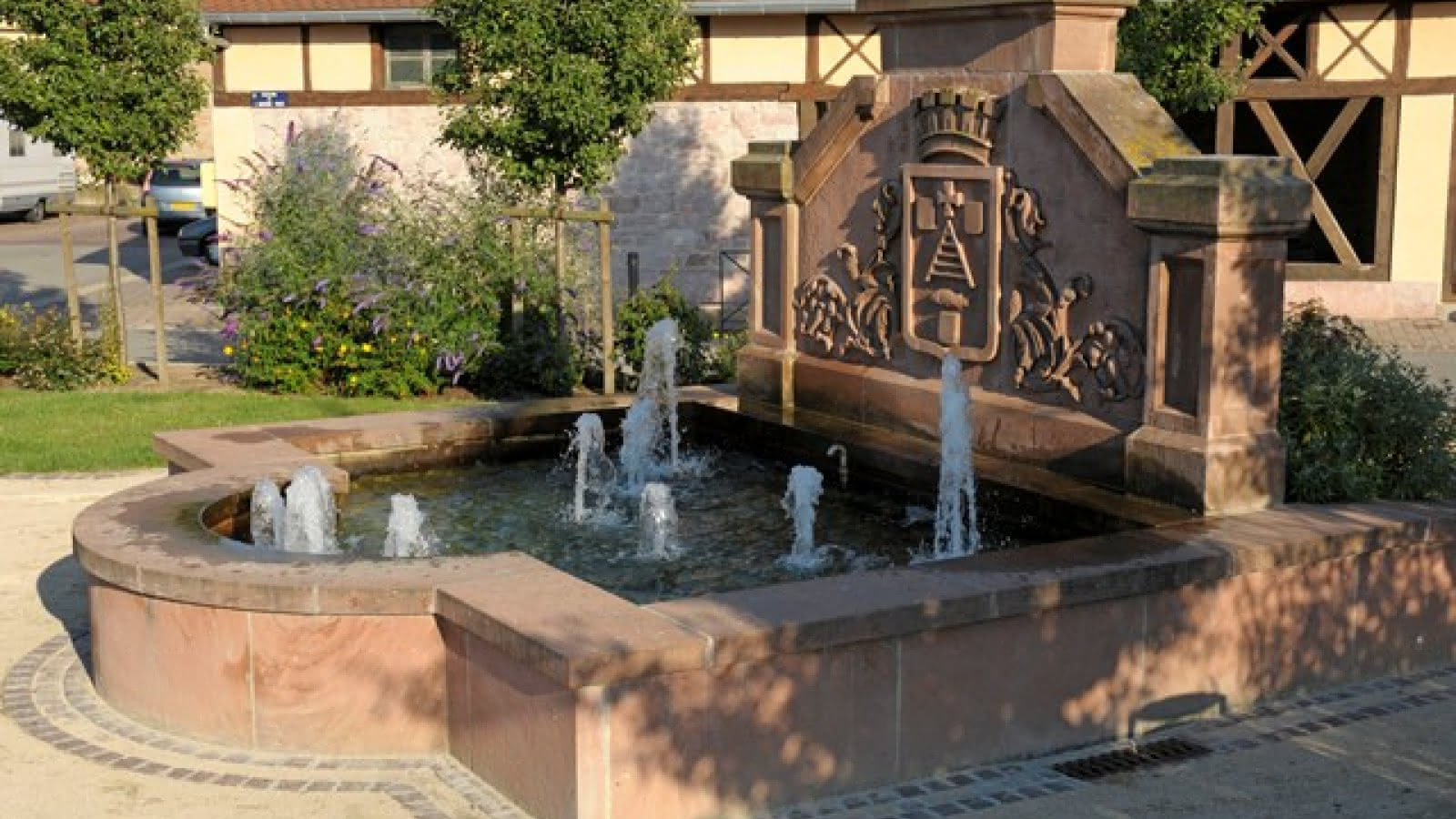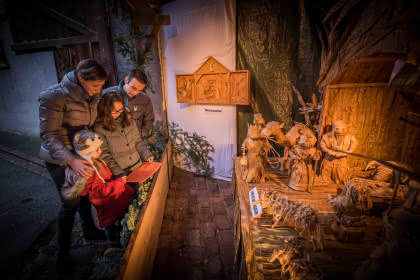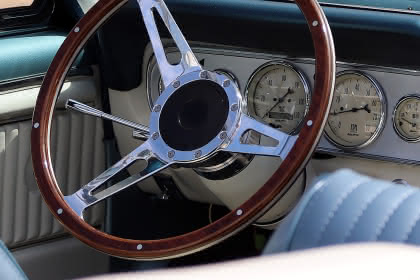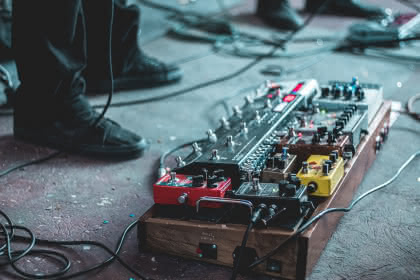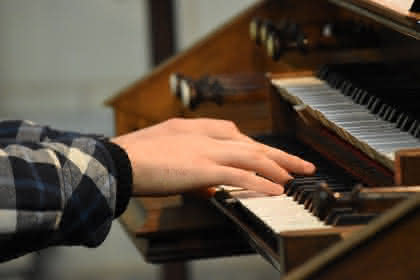Discovery tour of Guémar
- 1h
- km
- Suitable for everyone
Mentioned for the first time in 768, Guémar, was then called Ghermari, and made up of two parts. The oldest, Ober-Gemar with its church of Saint Dennis, belonged to the priory of Lièpvre, dependent on the abbey of Saint Dennis. The larger part, Nieder-Gemar, which is the Guémar of today, included the church of Saint-Léger, dependent on the abbey of Murbach. With a port (the “ Ladhof ”) that is attested since 1298, Guémar controlled the traffic of goods (mainly wine and grain) over land and water, as they were carried on the Fecht up to the river Ill (to Strasbourg and the Rhine). In 1479, the old port became obsolete and fell into disuse, with a new dock on the Ill that was more suited to boating needs. The boatmen and fishermen of Guémar then founded the village of Illhaeusern in order to move closer to the Ill, their place of work. The strategic location of Guémar on the Fecht and the major route from Strasbourg to Colmar, called the “Landstrasse”, made it necessary for it to be fortified in the 14th century and secure the status of a city in 1369. For the Ribeaupierre family, which owned the town, Guémar was a very important place. At the end of World War II, Guémar had sustained heavy damage and 70% of the city was destroyed. Guémar, which used to be an old fishing and farming village, still has a few farmhouses in brickwork and half timbering with their outhouses (barns, cowsheds, tobacco dryers, etc.). The town is built up very densely, enclosed as it was within walls up to the start of the 20th century. It grew after the last war. With its remarkable flowers, this charming little town now offers a quiet and pleasing living environment.
- Type of hiking trail : paved road


